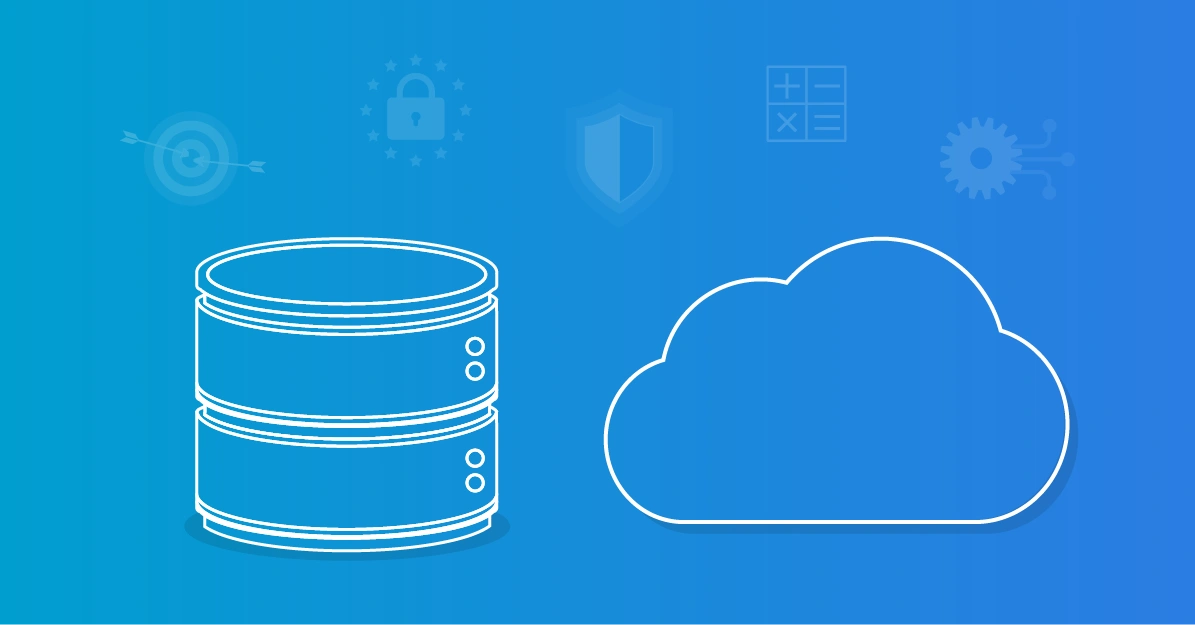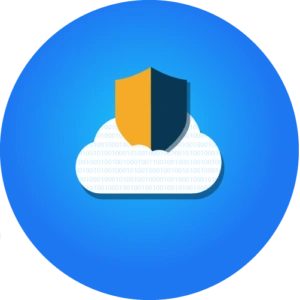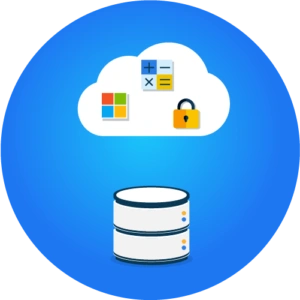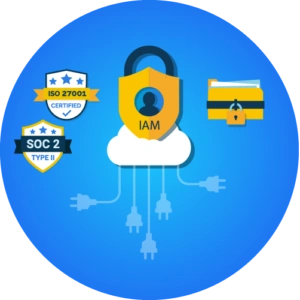
On-premise vs cloud
More and more organisations have been shifting from their on-premise systems to cloud-based solutions in recent years. Meanwhile, others are evaluating the costs and benefits of on-premise versus cloud environments, or they have already scheduled a migration to the cloud.
The shift towards the cloud is understandable. On-premise systems require organisations to use their own locally installed computer systems for processing and storing data, which can make automation complex and costly. In contrast, cloud solutions run on remote servers managed by a cloud provider in a data centre. This setup allows end-users to easily access software and data online, and since the infrastructure is shared among multiple organisations, it is both simpler and cheaper. Microsoft 365 is a prime example of such a cloud solution.
The cloud is popular in sectors like healthcare and education, but even traditionally cautious sectors like government now actively pursue cloud strategies. However, this popularity doesn't mean that migrating from an on-premise environment is always straightforward. Cloud solutions do bring significant challenges, with cloud security often topping the list of concerns: How can you ensure that your data is securely stored, processed, and shared within the cloud? We will explore this topic further in this blog.

The Importance of cloud security
Cloud security is about ensuring the reliability, integrity, and availability of your cloud applications and critically, all the data processed, stored, and managed in the cloud environment. This requires implementing security measures such as malware detection, data encryption, authentication, and authorisation, as well as actively monitoring access attempts and logging all activity within the cloud.
Focusing on a secure cloud solutions is obvious. A public cloud solution, which is shared with other organisations and accessible directly via the internet, naturally demands rigorous scrutiny of the security measures employed by cloud providers and platforms. Moreover, as securing on-premise platforms becomes increasingly difficult, cloud providers, thanks to their scale, can afford significant investments in digital security. In contrast, these costs are often prohibitively expensive for on-premise setups. And while on-premise software may instinctively feel safer, with its dedicated servers, network, and firewalls, the reality is that today, even these systems need to provide direct online access to users, customers, and partners. Therefore, on-premise solutions may appear safer than they actually are.
It's time to delve deeper and take a closer look at what's needed to organise information security within the cloud.

Information Security within the Cloud
In the cloud, customers share a common platform. It is crucial for the cloud provider to manage and encrypt customer data in such a way that each client can only access and use their own organisational data. However, this is just the first step in a comprehensive list of essential security measures. Here are some examples:
Secure user access: You might want to give access not only to your own employees but also to contractors and clients. Furthermore, users log in from various locations and use different devices. Tools like Identity and Access Management (IAM) systems are essential to keep access security manageable. We will delve deeper into the importance of a modern IAM for a secure cloud environment in the next section.
Secure cloud connections: Many cloud applications are interconnected. Unlike in a contained on-premise environment, this communication happens directly via the internet. Therefore, we need to secure these interfaces with extra care now. This requires a so-called zero-trust approach, where every communication session between cloud applications is always verified.
Prevent data breaches: Modern cloud applications simplify the online sharing of information, which can lead to easy mistakes. Even a well-meaning user could inadvertently trigger a data breach. By implementing smart Information Protection measures, such as labeling confidential data and detecting and blocking its unauthorized sharing, you can mitigate these risks. We provide some examples in .
Cloud compliance and certification: The safest cloud storage requires more than just technical safeguards. You largely depend on the professionalism and expertise of your service provider to install and manage your applications and data correctly. Therefore, it's essential to establish clear security agreements, including provisions for reporting and audits. Always collaborate with a provider that has at least an ISO 27001 certification and can produce a SOC 2 audit report.

Identity and Access Management for cloud security
As previously mentioned, a modern IAM is crucial for effectively managing access security in cloud environments. Here are some examples to illustrate this:
Authentication and authorisation for your cloud services
Access security begins with user verification, usually with a username and password. After authentication, individuals are granted access (authorisation) to the necessary applications and data. Cloud providers manage this with their own Identity Provider, but sophisticated IAM platforms offer additional access management features to make this access control even more agile.
Automated cloud provisioning and access management
Managing user accounts and access rights has traditionally been a manual IT process. A manager or HR staff member submits a request for an account and its corresponding access rights, which IT support then processes in the required IT systems. This approach is not only cumbersome and costly, but it also frequently leads to errors and issues. As people often change roles within an organisation, they can unintentionally accumulate excessive cloud access rights, posing a significant security risk. Additionally, accounts can sometimes remain active unintentionally even after an employee leaves the organisation. A modern IAM platform automates the synchronisation of all accounts and access rights with data from source systems, typically HR systems. Role-Based Access Control dictates which rights are necessary for each user role through business rules, and the distribution of non-standard access rights is also streamlined. The relevant managers are automatically prompted online for approval, and rights are appropriately terminated in a timely fashion, ensuring that access to your cloud data is strictly on a 'need to know' basis.
Compliant cloud security
Storing personal data in the cloud necessitates not only robust security measures but also the ability to demonstrate these protections at any moment. Should there unfortunately be a 'cloud security breach', it's crucial to have an immediate audit trail to resolve the problem, inform customers, and prevent future incidence. A cloud-based IAM like HelloID therefore logs all system adjustments and automatically records every attempt users make to access the cloud.
Want to know more about your cloud security?
Many organisations already rely heavily on the cloud. Others are comparing on-premise vs. cloud options, or they are planning the migration of their existing on-premise IT landscape 'as we speak'. Within the cloud, information security is obviously a serious focus. With the right security measures and a professional, certified cloud partner, these challenges are well manageable today. Want to know more about your access security within the cloud? Please contact our sales team.

Written by:
Arnout van der Vorst
Meet Arnout van der Vorst, the inspiring Identity Management Architect at Tools4ever since the year 2000. After completing his Higher Informatics studies at the University of Applied Sciences in Utrecht, he started as a Support Worker at Tools4ever. Since then, Arnout has advanced to become a key figure within the company. His contributions range from customer support to strategic pre-sales activities, and he shares his expertise through webinars and articles.